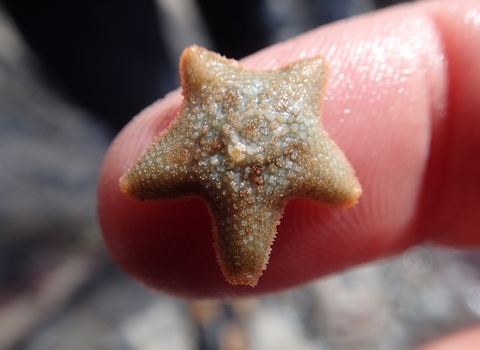
Cushion star ©Matt Slater
Cushion star
It's easy to see where this small starfish got its name, it really does look like a little star-shaped cushion. Keep an eye out under rocks next time you're rockpooling for this little beauty.
Scientific name
Asterina gibbosaWhen to see
January to DecemberSpecies information
Category
Statistics
Diameter: 5cm Lifespan: 7 yearsCommon
About
A small, thick starfish with five short arms, the cushion star is found on all western and southern coasts of the UK. For a chance to see these adorable starfish, look under rocks or in crevices in rockpools. Whilst they like to live in rockpools, they also like the occasional deep dive to the seabed! They feed at night but aren’t fussy and will eat whatever they can find. Cushion stars are echinoderms, which means ‘spiny skinned’ and it’s easy to see why, as their body is covered in short orange spines.How to identify
A small starfish that grows up to 5cm, with 5 (rarely 4 or 6) very short, broad arms. It has a puffy appearance, like a cushion. The dorsal surface is rough with projecting spines. The ventral surface is flat, with the mouth at the centre. Each of the mouth's plates bear two spines. Its colour varies but is most commonly pale orange, brown, green or cream.Distribution
Common on all British coasts but sparse in the North-East and not recorded from Lincolnshire around to Hampshire.Did you know?
All cushion stars are born male! It is a "protandrous hermaphrodite", meaning that small or young individuals are males but when individuals increase beyond a certain size, they develop into females.Watch
Cushion star (https://vimeo.com/642658467)
Nick Upton
